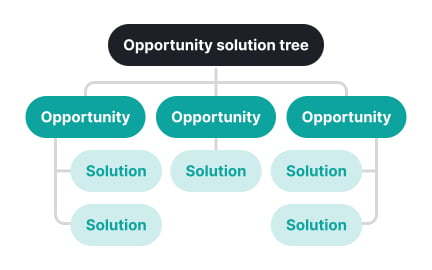Innovation Management
Innovation management involves structuring how new ideas are gathered, tested, and implemented to support product growth and market relevance.
What is Innovation Management?
Your organization talks constantly about innovation but struggles to turn creative ideas into successful products or meaningful business improvements. You've probably sat through countless brainstorming sessions that generate excitement but no sustained innovation outcomes.
Most companies fail at innovation not because they lack creative people, but because they don't have systematic processes for moving ideas from concept to implementation while managing the inherent risks and uncertainties involved.
Innovation Management is the systematic approach to organizing, directing, and controlling the processes that transform creative ideas into valuable business outcomes, including opportunity identification, resource allocation, risk management, and organizational change required for successful innovation.
Companies with strong innovation management practices report 2.4x higher revenue growth, 30% better employee engagement, and significantly stronger competitive positioning. Without structured approaches, innovative ideas remain just ideas.
Consider how 3M's famous "15% time" policy works because it's supported by innovation management systems: stage-gate processes, dedicated funding mechanisms, cross-functional collaboration structures, and metrics that track both breakthrough innovations and incremental improvements.
Why Innovation Management Matters for Business Leaders
Your organization generates plenty of creative ideas through innovation workshops and employee suggestions, but most initiatives stall in development, fail to gain organizational support, or launch without achieving meaningful business impact.
The cost of poor innovation management is substantial. You waste R&D investments, miss market opportunities, frustrate employees whose ideas never see implementation, and face competitive disadvantage against companies that execute innovation more effectively.
What structured innovation management delivers:
Higher innovation success rates because structured processes help teams validate concepts early, allocate resources effectively, and navigate organizational barriers that typically kill promising ideas.
When you have clear processes for evaluating, funding, and developing ideas, fewer promising concepts die in committee or get lost in organizational bureaucracy.
Faster time-to-market through systematic stage-gate processes that eliminate unnecessary delays while maintaining quality control and risk management throughout development cycles.
Better resource allocation because portfolio management approaches balance high-risk breakthrough innovations with lower-risk incremental improvements that provide steady business value.
Instead of betting everything on moonshot projects or playing it safe with tiny improvements, you can invest strategically across risk levels.
Stronger organizational innovation capability as teams develop skills, tools, and confidence needed to tackle increasingly ambitious innovation challenges over time.
Measurable business impact through innovation metrics that connect creative activities to revenue growth, cost reduction, customer satisfaction, and other key business outcomes.
Advanced Innovation Management Strategies
Once you've established basic innovation management foundations, implement sophisticated innovation acceleration approaches.
Open Innovation Ecosystems: Create systematic partnerships with startups, universities, suppliers, and even competitors to access broader innovation capabilities than internal teams alone can provide.
Innovation Labs and Incubators: Establish dedicated innovation spaces with different rules, metrics, and cultural norms that allow exploration of breakthrough opportunities without disrupting core business operations.
Customer Co-Innovation Programs: Engage key customers as innovation partners through advisory councils, beta testing programs, and collaborative development initiatives that ensure market relevance.
Innovation Venture Capital: Create internal venture arms that can invest in external startups while providing strategic learning and potential acquisition opportunities for breakthrough innovations.
Recommended resources
Courses

UX Research

HTML Foundations

Mentorship Mastery
Lessons

Co-creative Workshops

Types of Team Structures






